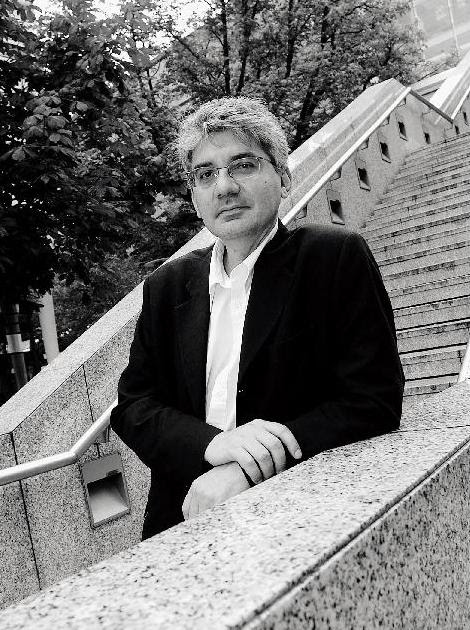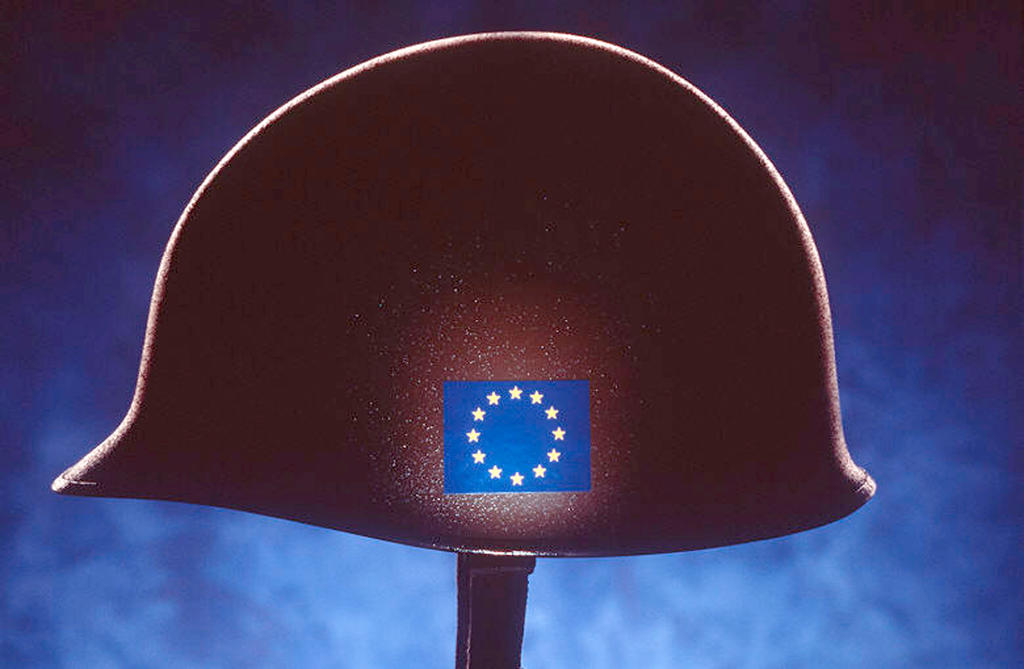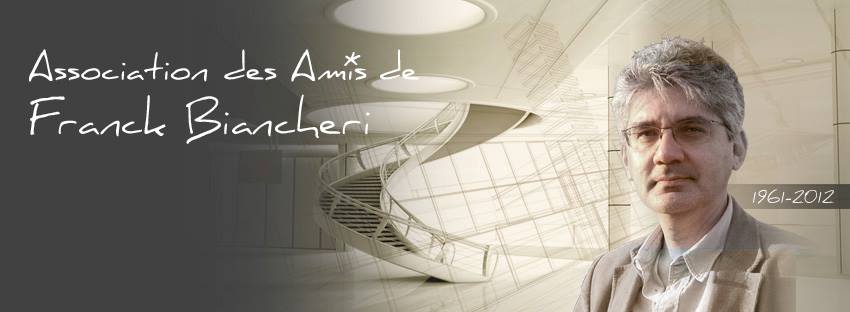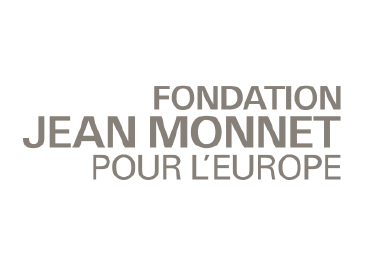Trump threats Europe with a trade war on steel and aluminum tariffs, the East and West European countries tear themselves apart because of the Nord Stream pipeline, the situation on Iran endangers the last Euro-Iran agreements, gas and oil … today Europe’s Achilles’ heel is still steel and energy… all this to remind us on this day why Europeans stand together…
The experience of the ECSC, the status of the concept of pooling resources in Europe today, and lessons for Europe and the World of Tomorrow (May 2013)
Europe was born out of energy more than 60 years ago. Today there is no such thing as “one” European policy on energy and resources, although different instruments, mechanisms have been put in place under the auspices of European institutions (Euratom, Green Paper, European Energy Charter, ACER , EIPs , the EU energy strategy for 2011-2020) .
…. Blackout in Europe in 2006, gas crisis in Ukraine in 2008, Deep Water Horizon in April 2010, tensions in Belarus in June 2010, Fukushima 2011, riots in Bulgaria last February, U.S. shale gas, … the news continues to come back to remind the need to establish a European energy policy. The Lisbon Treaty provides a legal basis for energy (Article 194 TFEU) and sets targets for the EU in this field, but it does not create what could be declared as an energy policy.
End of 2012, France, Belgium and Germany among others, have been facing a major crisis in the steel industry. Arcelor-Mittal, who bought several steel plants in Europe and Thysen-Krupp (German steel giant) hit by the crisis, took similar measures of site closures and mass layoffs.
In a Europe hit by the economic and social crisis, these decisions have obviously struck a sensitive chord of Europeans, who recalled that precisely their history is based on steel, and it has certainly not been neutral in the awareness of the necessity, not a debate, but the definition of a truly European energy policy and raw materials that can perhaps save the European steel industry but in this period of crisis has the financial resources and sufficient political will to protect industries and citizens (job security, equal access to energy, health …).
The similarity of the situations will not have escaped you:
– France, Germany, Belgium (Benelux…) three of the founding countries of the ECSC
– A Europe in crisis, even if we’re not in the need to maintain “peace” we perceive it in Europe between the European states and in the world there is a period of strong geopolitical tensions, particularly that of the competition for resources, the energy independence…
– Iron and Steel: resources , energy, industry
And it is therefore not a coincidence that ever since we heard the French, German or European officials talk about recovering the “audacity” of the ECSC to establish a genuine European energy policy.
→ So what is the ECSC, or more precise what was it, since it was dissolved in 2002 (more than 10 years ago)
The ECSC, European Coal and Steel Community was founded in 1951, by the will of 6 European countries, France, Germany, Italy, Belgium, Netherlands, Luxembourg, 6 years after the last bloody conflict crossed the European continent (and beyond) to build peace in Europe, particularly between France and Germany, but with three specific objectives:
– Manage jointly, share and control jointly critical resources of the era: the coal and steel, and their exploitation, establishing a single market for these resources;
To this end the ECSC Treaty provides the basic rules for the functioning of the Community market as you know based on free competition:
. anti-cartel principle (Article 65) “prohibited are all agreements between businesses, all decisions by businesses associations and all concerted practices tending the common market, directly or indirectly, to prevent, restrict or distort normal competition.. “
. antitrust principle (Article 66) “are subject to prior approval of the High Authority all concentrations between businesses, by merger, acquisition of shares, etc. . “
. and finally a clause to prevent speculation on prices (Article 60) states that are prohibited, in pricing, unfair competitive practices and discriminatory practices. As a result, companies must make public the prices and conditions of sale in the common market (rule commonly diverted).
-
Manage “off-market” by removing internal border tariffs (The disappearance of intracommunity tariffs on coal has mainly resulted in an increase of French purchases in Germany)
. Vis-à- vis third countries, rates are left at the discretion of each state, unlike the ECE who will establish a common external tariff.
. ECSC represents the Member States in GATT tariff negotiations (General Agreement on Tariffs and Trade).
– Support massively European industries of coal and steel to allow them to modernize, optimize production and reduce costs, while supporting the improvement of living conditions of their employees and their reclassification in case of dismissal (remember redundancies in the steel industry in 2012?)
The ECSC Treaty was signed for a period of 50 years, institutions have since been incorporated into the various construction treaties of the European Economic Community and European community, it has not been renegotiated and stopped in 2002.
What makes the ECSC unique are mostly the working mechanisms, it is indeed the first international organization based on supranational principles, thus it has been the foundation of the European construction. It is headed by a High Authority, supervised by bodies representing national governments, deputies, MPs and an independent judiciary. A mechanism that we find in the current functioning of the European Union.
→ Functioning of the ECSC:
1) The High Authority (composed of 9 members), supranational body to develop policies on coal and steel, it is therefore the ancestor of → The European Commission.
2) The Council of Ministers which included representatives of the six countries on the harmonization of the work of the High Authority and national governments. The Council gave its opinion on specific areas of work of the High Authority. Coal and steel were the exclusive domains of the High Authority and concerning the Council (as opposed to its current equivalent) could only act by voting on the Authority. However, all areas, excluding coal and steel, required the consent of the Board → The Council of Ministers
3) An Assembly composed of members appointed by the national parliaments exercised supervision over the executive. The Assembly was intended to be a democratic counterweight and control of the High Authority, a counselor, but it also had the power to dismiss the Authority for incompetence, injustice, corruption or fraud. → European Parliament (which has clearly lost some of these prerogatives )
4) Court of Justice responsible for resolving any disputes. → ECJ
5) An advisory committee representing civil society, producers, workers, consumers and traders in the area of coal and steel. -> This committee was composed of a plenary assembly, an office and a president. The High Authority was obliged to consult them in some cases and to inform of its decisions. The Advisory Committee will remain separate (despite the merger of other institutions) until 2002, where it will be integrated into the European Economic and Social Committee EESC → who doesn’t carry the same prerogatives anymore. It was the first independent international representation of consumers in history.
The status of the concept of pooling resources in Europe today
Rather than pooling the ECSC was mainly the first market of free movement of coal and steel, raising tariff barriers, trying to frame a pricing policy and external export, and spread the danger of concentration of production structures, balance between member states.
Context of the market:
– Social Tensions in Europe
– “National” antagonistic choice in terms of industrial development and energy (nuclear, coal, shale gas, wind, solar, wood, water …)
– Multiplication of bilateral partnerships of procurement with conflicting priorities, including gas. For example, problems of gas supply in the Central European countries heavily dependent on Russia, are less felt in Western Europe. Evidenced by the various pipeline projects to Russia (Nord Stream) and the Caspian Sea (Nabucco, South Stream).
– Change of the European energy landscape: less own resources, more and more external resources …
– Issue of renewable energy in the energy transition
– Displayed “will” of Europe to play a leading role in protecting resources and the environment worldwide
These are all signs of the need for genuine political strategy in Europe on the challenges of the 21st century, a long-term vision becomes urgent on issues that go far beyond the continental framework and call for an integrated trans-continental cooperation.
Faced with these challenges, the response of the European Union is that of liberalization, creation of a common energy market, electricity, gas, etc… are considered consumer goods like any other, without necessarily taking into account the specificity of these products, public goods? but that is another debate.
– Today at the European level there is no regulator on the energy market. We find them at national level, but the European Union so far has no regulatory mechanisms in the energy sector. Often these national mechanisms tend to defend the interests of national companies or to protect their national radiation effect.
– The European energy is build at a European level by developing a common energy policy that finds its application at the local level. Many local organizations benefit from EU funds to implement projects that meet EU targets for energy and the environment.
– The Lisbon Treaty devotes a considerable part to energy and evokes a necessary “energy solidarity”
Today Europe is facing three major challenges:
– Geopolitical (supply of energy resources)
– Economic (tackle rising energy costs)
– Ecological (choice of type of energy with regard to existing environmental problems).
Two axes define a European strategy for energy and resources :
– Intra-European policies, such as EIPs, namely European Innovation Partnership on raw materials, which are limited to stimulate investment in the extractive industry in Europe itself, support, networking of research in Europe, creation of a European technology Platform on Sustainable Mineral Resources … – which leaves, moreover, the thought that the exploitation of shale gas is not a closed option in Europe, Günther Oettinger, the European Commissioner for energy has recently stated that this option should be explored in Europe and some countries do not hesitate to embark on the first experiments and research …
– A European strategy for raw materials on world markets, a sort of “guidelines” a “raw materials diplomacy” against countries not belonging to the EU, establishing strategic partnerships and policies “dialogues”.
The EU’s relations with producers of energy countries – OPEC, Russia, Algeria, Norway – but also transit countries such as Ukraine or Turkey or with consumer countries are at the heart of the common strategy, essential being to speak with one voice. For now, the EU has committed political dialogue with Argentina, Chile, China, Colombia, the Euro-Mediterranean countries, Greenland, Japan, Mexico, Russia, the United States, Uruguay and Africa – UE2011 2013.
In this way the EU hopes to provide a framework for procurement policies which remain purely national.
Transnational issues that require a common European policy, trans-continental issues which require a coordinated trans-continental common policy.
→ As for the domestic market EU defends the principles of free competition and transparency in international commodity markets.
Many countries adopt more measures that distort free competition this: export taxes, import duties, price cartels or restrictive provisions on investment. These practices obviously have an impact on access to raw materials in manufacturing in developed, emerging and developing countries.
→ Reflections on the legal framework for extractive activities and the development of recycling raw materials ….
→ On the other side this European strategy is often seen as another attempt to grab resources
Why talk of the ECSC today?
Times change, so do countries that dominate or influence times.
Raw materials, such as geopolitics, do not escape this rule. Thus we see the decline of ancient powers, including Europe and the emergence of new entrants in the race for resources.
And when it comes to resources it is not only talking about oil and gas, energy and industrial resources or rare earth, but also of agricultural raw materials, minerals … I will not dwell the numbers of dependence, production, supply …
Access to resources has become a factor of international tensions.
We are in a period of instability, uncertainty, global crisis, a period that fuels competition, disputes, and antagonistic attitudes develop: Protectionism / neo-protectionism (see USA) with (as has been said) direct consequences on the global economic and financial stability, on price and competition of pricing, regional integration, land-grabbing, shopping resources, procurement, price speculation, revolts of populations (famines), revolts of consumers (in Bulgaria against the price of gas and electricity), imbalance of private operators, public … race on free trade treaties … until the war on the ground (Iraq, Libya, Afghanistan, Sino-Japanese conflict, coltan war in Congo, Sudan … )
Consumption of natural resources and increasing threat of exhaustion, increasingly difficult operating:
“Scarcity of raw materials” required to “take into account, in the exploitation of raw materials, a range of environmental and social criteria …
Eg. the terbium is the first fossil resource to disappear (2012). Phosphor for cathode ray tubes, silver (expected depletion between 2021 and 2037) and even gold which an eligible cost exploitable deposits would be exhausted in 2025 …
Eg. offshore oil operations
their operations in terms of environmental protection (such as abuse of farmland … )
The global challenges are many: the need to assure at the same time:
– Resource Protection
– Geostrategic balance between the countries on road of emergence (justice) as regards the supply, access and distribution
– Operating model (nationalized public/private national/foreign companies, consortia…)
– Financial balances, investments
– And finally global energy transition
The example of the ECSC is not so much in the actual construction of a community, but the challenge imposed by a joint political will to prepare a peaceful future with innovative ideas for new governance in sharing knowledge and experience and the development of instruments to manage the best resources of its member states, establish a strategic partner community in international negotiations.
ECSC did in fact not complete the transfer of energy and raw resources policies at European level, it offered a framework of stability and balance.
And on this point I can not help but make the first parallel between the ECSC and the Euro -BRICS: 6 states …
I would still like to remind us of what Franck Biancheri wrote: “a partnership is built on the desire to imagine the challenges of the future and know that we can only control them together”. It may not be the way that the EU seems to follow, but it is the way that Euroland wants to follow to avoid a world conflict blocks, which would be one of the worst scenarios of after the crisis.
Marianne Ranke-Cormier (Euro-BRICS – Moscow, May 2013) The experience of the ECSC_lessons for Europe and the World of Tomorrow (May 2013)
(article en anglais) Trump threats Europe with a trade war on steel and aluminum tariffs, the East and West European countries tear themselves apart because of the Nord Stream pipeline, the situation on Iran endangers the last Euro-Iran agreements, gas and oil … today Europe’s Achilles’ heel is still steel and energy… all this to remind us on this day why Europeans stand together…
The experience of the ECSC, the status of the concept of pooling resources in Europe today, and lessons for Europe and the World of Tomorrow (May 2013)
Europe was born out of energy more than 60 years ago. Today there is no such thing as “one” European policy on energy and resources, although different instruments, mechanisms have been put in place under the auspices of European institutions (Euratom, Green Paper, European Energy Charter, ACER , EIPs , the EU energy strategy for 2011-2020) .
…. Blackout in Europe in 2006, gas crisis in Ukraine in 2008, Deep Water Horizon in April 2010, tensions in Belarus in June 2010, Fukushima 2011, riots in Bulgaria last February, U.S. shale gas, … the news continues to come back to remind the need to establish a European energy policy. The Lisbon Treaty provides a legal basis for energy (Article 194 TFEU) and sets targets for the EU in this field, but it does not create what could be declared as an energy policy.
End of 2012, France, Belgium and Germany among others, have been facing a major crisis in the steel industry. Arcelor-Mittal, who bought several steel plants in Europe and Thysen-Krupp (German steel giant) hit by the crisis, took similar measures of site closures and mass layoffs.
In a Europe hit by the economic and social crisis, these decisions have obviously struck a sensitive chord of Europeans, who recalled that precisely their history is based on steel, and it has certainly not been neutral in the awareness of the necessity, not a debate, but the definition of a truly European energy policy and raw materials that can perhaps save the European steel industry but in this period of crisis has the financial resources and sufficient political will to protect industries and citizens (job security, equal access to energy, health …).
The similarity of the situations will not have escaped you:
– France, Germany, Belgium (Benelux…) three of the founding countries of the ECSC
– A Europe in crisis, even if we’re not in the need to maintain “peace” we perceive it in Europe between the European states and in the world there is a period of strong geopolitical tensions, particularly that of the competition for resources, the energy independence…
– Iron and Steel: resources , energy, industry
And it is therefore not a coincidence that ever since we heard the French, German or European officials talk about recovering the “audacity” of the ECSC to establish a genuine European energy policy.
→ So what is the ECSC, or more precise what was it, since it was dissolved in 2002 (more than 10 years ago)
The ECSC, European Coal and Steel Community was founded in 1951, by the will of 6 European countries, France, Germany, Italy, Belgium, Netherlands, Luxembourg, 6 years after the last bloody conflict crossed the European continent (and beyond) to build peace in Europe, particularly between France and Germany, but with three specific objectives:
– Manage jointly, share and control jointly critical resources of the era: the coal and steel, and their exploitation, establishing a single market for these resources;
To this end the ECSC Treaty provides the basic rules for the functioning of the Community market as you know based on free competition:
. anti-cartel principle (Article 65) “prohibited are all agreements between businesses, all decisions by businesses associations and all concerted practices tending the common market, directly or indirectly, to prevent, restrict or distort normal competition.. “
. antitrust principle (Article 66) “are subject to prior approval of the High Authority all concentrations between businesses, by merger, acquisition of shares, etc. . “
. and finally a clause to prevent speculation on prices (Article 60) states that are prohibited, in pricing, unfair competitive practices and discriminatory practices. As a result, companies must make public the prices and conditions of sale in the common market (rule commonly diverted).
-
Manage “off-market” by removing internal border tariffs (The disappearance of intracommunity tariffs on coal has mainly resulted in an increase of French purchases in Germany)
. Vis-à- vis third countries, rates are left at the discretion of each state, unlike the ECE who will establish a common external tariff.
. ECSC represents the Member States in GATT tariff negotiations (General Agreement on Tariffs and Trade).
– Support massively European industries of coal and steel to allow them to modernize, optimize production and reduce costs, while supporting the improvement of living conditions of their employees and their reclassification in case of dismissal (remember redundancies in the steel industry in 2012?)
The ECSC Treaty was signed for a period of 50 years, institutions have since been incorporated into the various construction treaties of the European Economic Community and European community, it has not been renegotiated and stopped in 2002.
What makes the ECSC unique are mostly the working mechanisms, it is indeed the first international organization based on supranational principles, thus it has been the foundation of the European construction. It is headed by a High Authority, supervised by bodies representing national governments, deputies, MPs and an independent judiciary. A mechanism that we find in the current functioning of the European Union.
→ Functioning of the ECSC:
1) The High Authority (composed of 9 members), supranational body to develop policies on coal and steel, it is therefore the ancestor of → The European Commission.
2) The Council of Ministers which included representatives of the six countries on the harmonization of the work of the High Authority and national governments. The Council gave its opinion on specific areas of work of the High Authority. Coal and steel were the exclusive domains of the High Authority and concerning the Council (as opposed to its current equivalent) could only act by voting on the Authority. However, all areas, excluding coal and steel, required the consent of the Board → The Council of Ministers
3) An Assembly composed of members appointed by the national parliaments exercised supervision over the executive. The Assembly was intended to be a democratic counterweight and control of the High Authority, a counselor, but it also had the power to dismiss the Authority for incompetence, injustice, corruption or fraud. → European Parliament (which has clearly lost some of these prerogatives )
4) Court of Justice responsible for resolving any disputes. → ECJ
5) An advisory committee representing civil society, producers, workers, consumers and traders in the area of coal and steel. -> This committee was composed of a plenary assembly, an office and a president. The High Authority was obliged to consult them in some cases and to inform of its decisions. The Advisory Committee will remain separate (despite the merger of other institutions) until 2002, where it will be integrated into the European Economic and Social Committee EESC → who doesn’t carry the same prerogatives anymore. It was the first independent international representation of consumers in history.
The status of the concept of pooling resources in Europe today
Rather than pooling the ECSC was mainly the first market of free movement of coal and steel, raising tariff barriers, trying to frame a pricing policy and external export, and spread the danger of concentration of production structures, balance between member states.
Context of the market:
– Social Tensions in Europe
– “National” antagonistic choice in terms of industrial development and energy (nuclear, coal, shale gas, wind, solar, wood, water …)
– Multiplication of bilateral partnerships of procurement with conflicting priorities, including gas. For example, problems of gas supply in the Central European countries heavily dependent on Russia, are less felt in Western Europe. Evidenced by the various pipeline projects to Russia (Nord Stream) and the Caspian Sea (Nabucco, South Stream).
– Change of the European energy landscape: less own resources, more and more external resources …
– Issue of renewable energy in the energy transition
– Displayed “will” of Europe to play a leading role in protecting resources and the environment worldwide
These are all signs of the need for genuine political strategy in Europe on the challenges of the 21st century, a long-term vision becomes urgent on issues that go far beyond the continental framework and call for an integrated trans-continental cooperation.
Faced with these challenges, the response of the European Union is that of liberalization, creation of a common energy market, electricity, gas, etc… are considered consumer goods like any other, without necessarily taking into account the specificity of these products, public goods? but that is another debate.
– Today at the European level there is no regulator on the energy market. We find them at national level, but the European Union so far has no regulatory mechanisms in the energy sector. Often these national mechanisms tend to defend the interests of national companies or to protect their national radiation effect.
– The European energy is build at a European level by developing a common energy policy that finds its application at the local level. Many local organizations benefit from EU funds to implement projects that meet EU targets for energy and the environment.
– The Lisbon Treaty devotes a considerable part to energy and evokes a necessary “energy solidarity”
Today Europe is facing three major challenges:
– Geopolitical (supply of energy resources)
– Economic (tackle rising energy costs)
– Ecological (choice of type of energy with regard to existing environmental problems).
Two axes define a European strategy for energy and resources :
– Intra-European policies, such as EIPs, namely European Innovation Partnership on raw materials, which are limited to stimulate investment in the extractive industry in Europe itself, support, networking of research in Europe, creation of a European technology Platform on Sustainable Mineral Resources … – which leaves, moreover, the thought that the exploitation of shale gas is not a closed option in Europe, Günther Oettinger, the European Commissioner for energy has recently stated that this option should be explored in Europe and some countries do not hesitate to embark on the first experiments and research …
– A European strategy for raw materials on world markets, a sort of “guidelines” a “raw materials diplomacy” against countries not belonging to the EU, establishing strategic partnerships and policies “dialogues”.
The EU’s relations with producers of energy countries – OPEC, Russia, Algeria, Norway – but also transit countries such as Ukraine or Turkey or with consumer countries are at the heart of the common strategy, essential being to speak with one voice. For now, the EU has committed political dialogue with Argentina, Chile, China, Colombia, the Euro-Mediterranean countries, Greenland, Japan, Mexico, Russia, the United States, Uruguay and Africa – UE2011 2013.
In this way the EU hopes to provide a framework for procurement policies which remain purely national.
Transnational issues that require a common European policy, trans-continental issues which require a coordinated trans-continental common policy.
→ As for the domestic market EU defends the principles of free competition and transparency in international commodity markets.
Many countries adopt more measures that distort free competition this: export taxes, import duties, price cartels or restrictive provisions on investment. These practices obviously have an impact on access to raw materials in manufacturing in developed, emerging and developing countries.
→ Reflections on the legal framework for extractive activities and the development of recycling raw materials ….
→ On the other side this European strategy is often seen as another attempt to grab resources
Why talk of the ECSC today?
Times change, so do countries that dominate or influence times.
Raw materials, such as geopolitics, do not escape this rule. Thus we see the decline of ancient powers, including Europe and the emergence of new entrants in the race for resources.
And when it comes to resources it is not only talking about oil and gas, energy and industrial resources or rare earth, but also of agricultural raw materials, minerals … I will not dwell the numbers of dependence, production, supply …
Access to resources has become a factor of international tensions.
We are in a period of instability, uncertainty, global crisis, a period that fuels competition, disputes, and antagonistic attitudes develop: Protectionism / neo-protectionism (see USA) with (as has been said) direct consequences on the global economic and financial stability, on price and competition of pricing, regional integration, land-grabbing, shopping resources, procurement, price speculation, revolts of populations (famines), revolts of consumers (in Bulgaria against the price of gas and electricity), imbalance of private operators, public … race on free trade treaties … until the war on the ground (Iraq, Libya, Afghanistan, Sino-Japanese conflict, coltan war in Congo, Sudan … )
Consumption of natural resources and increasing threat of exhaustion, increasingly difficult operating:
“Scarcity of raw materials” required to “take into account, in the exploitation of raw materials, a range of environmental and social criteria …
Eg. the terbium is the first fossil resource to disappear (2012). Phosphor for cathode ray tubes, silver (expected depletion between 2021 and 2037) and even gold which an eligible cost exploitable deposits would be exhausted in 2025 …
Eg. offshore oil operations
their operations in terms of environmental protection (such as abuse of farmland … )
The global challenges are many: the need to assure at the same time:
– Resource Protection
– Geostrategic balance between the countries on road of emergence (justice) as regards the supply, access and distribution
– Operating model (nationalized public/private national/foreign companies, consortia…)
– Financial balances, investments
– And finally global energy transition
The example of the ECSC is not so much in the actual construction of a community, but the challenge imposed by a joint political will to prepare a peaceful future with innovative ideas for new governance in sharing knowledge and experience and the development of instruments to manage the best resources of its member states, establish a strategic partner community in international negotiations.
ECSC did in fact not complete the transfer of energy and raw resources policies at European level, it offered a framework of stability and balance.
And on this point I can not help but make the first parallel between the ECSC and the Euro -BRICS: 6 states …
I would still like to remind us of what Franck Biancheri wrote: “a partnership is built on the desire to imagine the challenges of the future and know that we can only control them together”. It may not be the way that the EU seems to follow, but it is the way that Euroland wants to follow to avoid a world conflict blocks, which would be one of the worst scenarios of after the crisis.
Marianne Ranke-Cormier (Euro-BRICS – Moscow, May 2013) The experience of the ECSC_lessons for Europe and the World of Tomorrow (May 2013)






